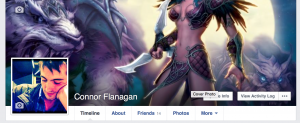Howard Garder – Five Minds for the Future
“In the interconnected world in which the vast majority of human beings now live, it is not enough to state what each individual or group needs to survive on its own turf. In the long run, it is not possible for parts of the world to thrive while others remain desperately poor and deeply frustrated.”
This is one of the sentences which stood out to me the most at the beginning of this reading. The author talks about five different ‘minds’: disciplined, synthesizing, creating, respectful and ethical. These five minds are what the author believes will embody the essential ways of thinking in the future. The ethical mind relates to the quote above, as when we take an ethical stance on certain situations, the individual has to understand their place in the world in relation to their region, their nation and their planet. As I spent my gap year doing a lot of travelling, it did open my mind to a lot of questions about my place in and my responsibilities to this world. It is interesting to note that the author believes that individuals who posses all five minds will thrive the most in the workplace.
The author also goes on to state that we should adapt new educational practices, and that the current practises are not working because the world is constantly changing in significant ways. As the world changes, certain educational practises become redundant or irrelevant. It is interesting to note that the author believes new educational aspirations could include learning respect for all different people and minds, as we will eventually all be united and no longer isolated.
The reading then goes on to discuss globalization aka deterritorialization. The reading talks about four unprecedented trends which have occurred: 1. capital/market instruments moving around the globe; 2. humans moving around the world with 100mil immigrants scattered around the world at any time; 3. movement of matter through cyberspace; 4. pop culture circulating the world. If we focus on the workplace, the author talks about how it is largely skills focused, and not really focused on human qualities: how people of different backgrounds and emotional intelligence and perform differently. We need to think more globally, and we need to keep developing the five different mindsets to thrive.



